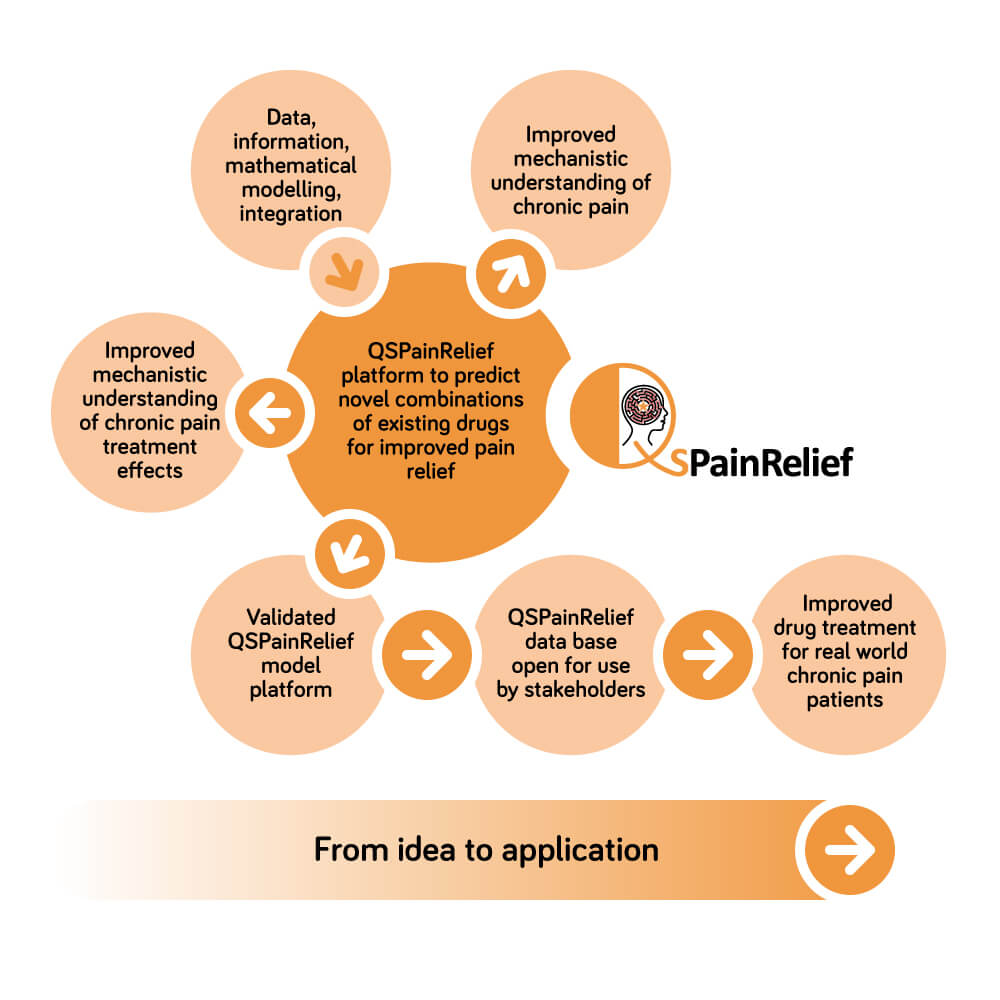Chronic pain is a complex disease suffered by about 20% of Europeans. Up to 60% of these patients do not experience adequate pain relief from currently available analgesic combinational therapies and/or suffer confounding adverse effects. Of the many conceivable combinations, only a few have been studied in formal clinical trials. Thus, physicians have to rely on clinical experience when treating chronic pain patients. The vision of the QSPainRelief consortium was that alternative novel drug combinations with improved analgesia and reduced adverse effects can be identified and assessed by mechanism-based Quantitative Systems Pharmacology (QSP) in silico modelling. This is far cheaper and less time-consuming than clinical trials alone.
We developed an in silico QSPainRelief platform, which integrates 1) physiologically based pharmacokinetic models to quantify and adequately predict drug pharmacokinetics in human CNS, 2) target-binding kinetic models, 3) cellular signalling models, and 4) a proprietary neural circuit model to quantify the drug effects on the activity of relevant brain neuronal networks that also adequately predict clinical outcomes. In the future, this platform will also integrate patient characteristics such as age, sex, disease status, and genotypes to predict efficacy and tolerability of a wide range of analgesic and other centrally active drug combinations, and rank these. The best predicted combinations have been validated in animal models, tested in clinical studies in healthy volunteers, and are currently being validated in real-world clinical practice.
The QSPainRelief project greatly increased the general understanding of chronic pain and already triggered the development of better combination therapies. The quantitative insights and confirmed effective combinational treatments from this project will hopefully be a game-changer, improve the management of pain in individuals and stratified subpopulations of chronic pain patients, and reduce the huge burden on healthcare systems.

The QSPainRelief consortium developed a model platform using existing and new data, validated on existing and new preclinical and clinical data. This is a faster and more cost-effective way to investigate novel drug combinations to treat chronic pain than de novo drug development. Eventually, QSPainRelief provided an open-access platform with an exhaustive ranking of chronic pain drug treatment combinations from “preferable” to “to be avoided”. We envision that this will have a direct impact on current medical practice and alleviate the burden of chronic pain in patients.